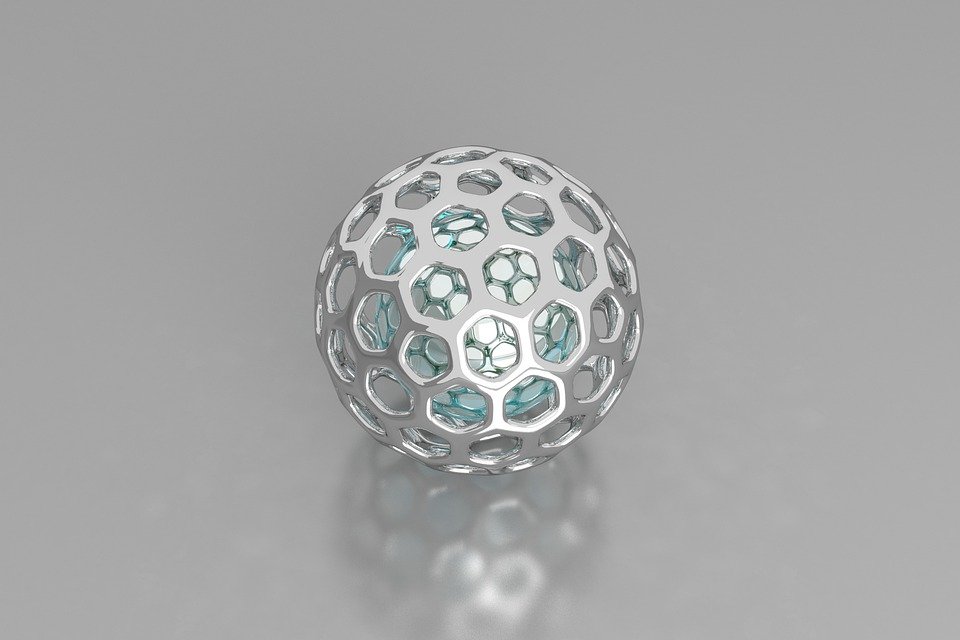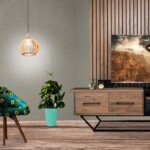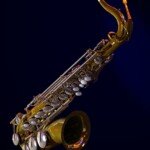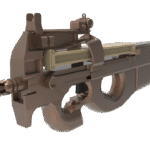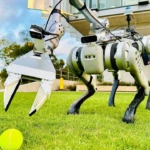Beyond the blueprint: When 3D printing scales up to build our world (thanks to innovators like Cobod)
Remember those scenes in science fiction novels where entire buildings unfolded before our eyes? What seemed like fantasy a decade ago is quickly becoming a reality. Leading this transformation is Danish company Cobod, whose BOD2 3D printer is fundamentally reshaping the architectural landscape—not tomorrow, but today. It’s not just about building faster; It aims to unleash unprecedented design freedom, material efficiency and a leap towards more sustainable construction.
Cobod: Catalyst for Concrete Transformation
Cobod has not only entered the field of architectural 3D printing; It redefines the rules. While others strive to move beyond prototypes, Cobod focuses on creating a robust, modular, industrial-grade platform: BOD2 (Build on Demand) printer. What makes BOD2 stand out?
-
Unparalleled scalability and flexibility:
- Modular design: BOD2’s framework consists of standardized, modular components. Need a bigger printer? Just add sections. This allows it to effortlessly grow from a printing shop to a multi-story building or large industrial structure. The printing area can exceed 30m x 10m x 10m.
- Freedom of movement: Using Cartesian coordinates (X, Y, Z axes), BOD2 moves freely in 3D space. Combined with its typically rail-mounted configuration, it can navigate complex sites and print designs not possible with traditional templates, such as complex curves, overhangs and organic shapes.
-
Embrace the versatility of materials:
- BOD2 isn’t just about one "special" concrete mixture. Its large, advanced printhead can process standard, off-the-shelf building materials – primarily cement-based mortars with carefully optimized additives. A focus on accessibility is critical to widespread adoption. Crucially, it is also able to print other materials simultaneously, such as insulating foam or known materials – opening the door to printing integrated structures and insulating elements in one go.
-
Industrial reliability and speed:
- The BOD2 is designed for harsh construction environments and has a rugged construction. It is designed for 24/7 continuous operation and is able to adapt to real site conditions. This means the construction cycle is significantly accelerated—the entire structural walls of a house can be printed in just days instead of weeks, significantly reducing labor costs and project timelines.
- Digital precision, less waste:
- Each layer is placed to the millimeter precision specified by the CAD model, minimizing the material waste inherent in template-based methods. It eliminates the interruptions and errors common in traditional bricklaying or concrete pouring, making a significant contribution to construction’s sustainability goals.
The proof is in the printed pudding: Cobod’s impact
Cobod doesn’t just sell printers; It is nurturing a global ecosystem. Their technology is deployed by contractors and entrepreneurs around the world such as PERI, Holcim and many local champions, building a diverse portfolio of:
- Affordable housing: Projects in Kenya, Malawi and across Europe demonstrate scalable solutions for fast, cost-effective housing.
- Commercial buildings: Offices, schools, data centers – complex structures require speed and precision.
- Uniquely designed structure: Sculpture walls, curved buildings, custom architectural elements have traditionally been expensive or impossible.
- Industrial facilities: Large functional structures that require rapid deployment.
The future is layered: where is this headed?
Cobod’s success is a strong indicator of the construction industry’s trajectory:
- Democraticization of architecture: Smaller construction firms can now deliver complex designs and compete with significantly faster execution times.
- Sustainable development is imperative: Reducing waste, the potential of low-carbon concrete mixes and optimizing material use became core design principles for the realization of the process.
- Human-machine collaboration: 3D printing shifts the workforce from tedious manual tasks to higher-skilled roles: machine operation, maintenance, design for additive manufacturing, and complex finishing.
- Materials Science Revolution: There continues to be a push for stronger, faster-curing, more sustainable, and even multifunctional printable materials (e.g., incorporating insulating materials, reinforcements, or sensors during the printing process).
- Infrastructure perspective: While buildings are the current focus, the potential for printing bridges, retaining walls and critical infrastructure in remote or disaster-hit areas is huge.
The construction industry is constantly evolving. Cobod isn’t just building homes; it’s building the future of an entire industry, one precise layer at a time.
Conclusion: Beyond the Hype to Build a Real Future
The narrative around architectural 3D printing has evolved from "Is it possible?" arrive "How quickly can we deploy it?" Cobod’s BOD2 platform demonstrates this reality. It has successfully transcended the novelty stage, proving its industrial value globally in terms of scale, speed, design freedom and material efficiency. The impact is manifold: solving the housing shortage, reducing construction waste, enabling unprecedented forms of construction, and paving the way for a more automated and sustainable construction industry.
While challenges remain – particularly around building codes, material certification for structural elements and training the next generation workforce – the trajectory is clear. Cobod didn’t just build a large printer; It lays a solid foundation for a fundamental shift in how we conceive, design and build the spaces in which we live and work. The future of construction is additive, efficient, and already printed.
FAQ: Architectural 3D Printing and Cobod Technology
1. What exactly is Cobod’s BOD2 printer?
The Cobod BOD2 is a large-scale modular 3D printer designed for architectural applications. It uses Cartesian motion and can scale to print buildings or structures exceeding 30 meters in length and 10 meters in height. It extrudes a specialized concrete or mortar mixture layer by layer to create walls and structural elements.
2. What materials do Cobod printers use?
The primary material is a cement-based mortar or concrete mixture specially formulated for extrusion, rapid setting and achieving the necessary structural strength. Crucially, Cobod prioritized the use of locally available standard materials wherever possible. It can also simultaneously print insulating materials with known properties, such as foam.
3. Are buildings printed by Cobod safe and strong?
Yes, if designed and executed properly. The structure is printed with a specific concrete mix to meet the required strength (often exceeding the standards of traditional masonry). Rebar (rebar or other systems) are integrated within the printed walls based on structural engineering calculations, ensuring they meet or exceed local building codes.
4. How much faster is Cobod’s 3D printing than traditional methods?
For structural elements, the speed is significantly faster. Printing the load-bearing walls of a single-story house takes just days instead of weeks, significantly shortening the overall project time. Time savings come from continuous printing and eliminating the need for template installation and removal.
5. Can I print multi-story buildings?
Absolutely. The BOD2’s modular design allows it to be configured to significant heights. Additionally, the proven technology involves printing successive layers or segments. Projects have successfully demonstrated the printing of two, three and even more stories.
6. Is architectural 3D printing like Kebode’s environmentally friendly?
It has significant environmental advantages:
- Massive waste reduction: Precise material deposition eliminates much of the formwork waste and offcuts found in traditional concrete or blockwork.
- Material efficiency: Use only the materials needed for the structure and minimize excess material.
- The potential of sustainable materials: Promote the use of alternative low carbon cement mixes and locally sourced materials.
- Reduce transportation: On-site printing can significantly reduce the number of deliveries required for large templates.
7. What are the main limitations?
Challenges include:
- Building Codes: The process of continually adapting regulations to fully adopt this technology is ongoing.
- finishing: Like traditional construction, printed walls require finishing (plastering, cladding, windows, doors, roofing, MEP installation).
- Strengthen integration: Effective and efficient placement of reinforcement materials during the printing process is an area of active development.
- Initial investment: Printers have higher capital costs (although operating cost savings are substantial).
8. Is Cobod the only company doing this?
While Cobod is the leading innovator and has extensive global reach through partnerships, there are multiple players in the construction 3D printing space. However, Cobod is known for its modular scalability, focus on standard materials, and track record in a variety of commercial projects around the world.
9. Will 3D printing replace construction workers?
Not exactly. It changes characters rather than eliminates them. It shifts the workforce to machine operation, maintenance, robotics integration supervision, complex design/engineering, specialty material handling and finishing industries. Collaboration between human expertise and machine capabilities is key.
Looking to harness the precision of advanced additive manufacturing? Just as Cobod revolutionized the construction industry with large-scale 3D printing, huge light at the forefront Metal 3D printing solution. For truly complex, high-performance metal components, our expertise meets your ambitions.
- Industrial grade metal printing: Utilize state-of-the-art DMLS/metal binder jetting technology to machine otherwise complex geometries.
- Material mastery: Machining a variety of metals including stainless steel, tool steel, aluminum alloys, titanium, Inconel, copper and custom alloys.
- Designed for performance: Parts offer superior strength, heat resistance and precision for aerospace, automotive, medical, energy and industrial applications.
- Seamless post-processing: Complete in-house capabilities: heat treatment (HIP), precision CNC machining, surface finishing (polishing, sandblasting), support removal. Deliver real finished parts, ready for integration.
- Speed and customization: Rapid prototyping and on-demand production of custom precision metal parts.
Don’t let traditional manufacturing constraints limit your design. Experience the advantages of GreatLight in metal 3D printing. Customize your precision metal parts today! [Contact GreatLight Today]
